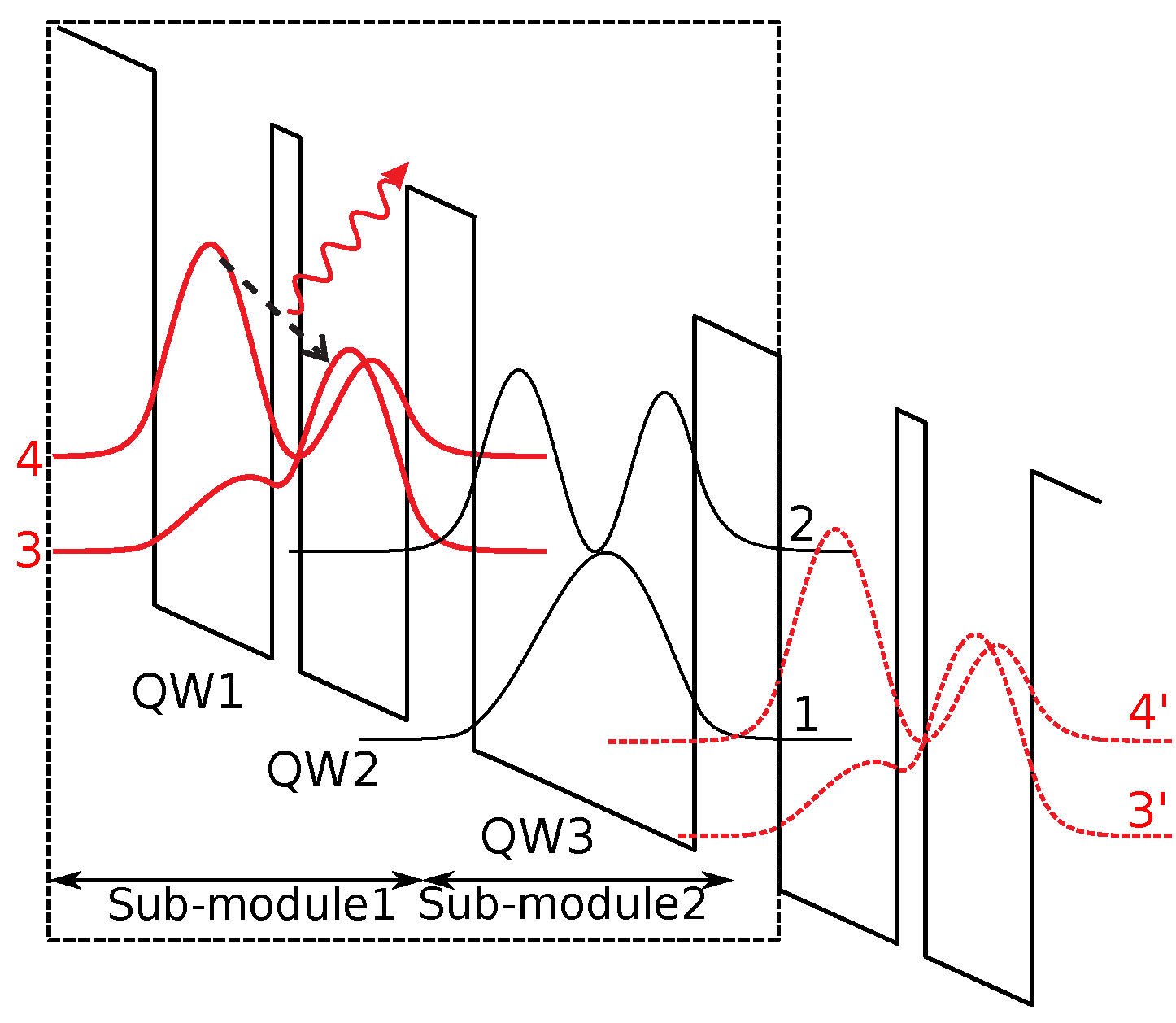
A quantum cascade laser (QCL) is an electrically driven semiconductor laser, emitting light in the mid-infrared to the terahertz spectral region (~ 2.75 µm – 300 µm). Compared to conventional laser diodes, QCLs do not generate light upon recombination of an electron in the valence band with a hole in the conduction band (interband transition), but when one charge carrier, mostly electrons in the conduction band, undergoes transitions between artificially created subbands. Therefore, the system is more similar to a four-level gas laser, where electrons of gas atoms are excited to a high energy level, they emit a photon upon transition to a lower level, and finally relax to the ground state.
The energy levels in a QCL can be engineered by alternatingly growing two semiconductors with different band gaps on top of each other, creating a 1D-energy landscape of quantum wells and barriers in the growth direction. The discrete energy levels within such a well depend on the thickness of that well and the material used. Thin barriers between the wells allow the electrons to tunnel from well to well. By carefully designing the wells and the barriers, an artificial four-level laser system can be realised.
Another important feature of a QCL is its cascading scheme. The same structure of wells and barriers is repeated multiple times and stacked on top of each other. This causes the electron to go through an optical transition at each of the four-level systems. Therefore, one electron can produce as many photons as there are periods in the laser (cf. in a diode laser one electron produces one photon), which increases the laser gain.
The dashed rectangle in Figure 1 shows the band diagram of one of the repeating units of a typical three-well QCL. The energy levels are tilted because a voltage is applied, and the slope corresponds to the electric field. The squares of the wavefunctions are drawn at their respective energies. In the active wells (QW1, QW2) the optical transition takes place. An electron makes a transition from energy level 4 to the lower-lying level 3 and emits a photon with the wavelength of the energy difference. Via resonant tunnelling, the electron goes to level 2 in QW3, referred to as the extractor. The energy difference between level 2 and 1 is designed to be the same as a longitudinal-optical (LO) phonon, therefore, a transition is caused by phonon scattering and occurs quite rapidly. Finally, the electron gets injected into the next repeating unit by resonant tunnelling. Because the resonant tunnelling and phonon scattering happen much faster than the spontaneous emission, inversion can be achieved.

There are different QCL designs consisting of many more wells, but each of them functions as a four-level energy system. In a quantum cascade laser, the optical transition energy also depends on the width of the wells, not just the bandgaps of the materials used, so lasers of different wavelengths can be produced with the same materials system.
[1] Liang Gao et al., "Short Barriers for Lowering Current-Density in Terahertz Quantum Cascade Lasers", Photonics. 7. 7., DOI: 10.3390/photonics7010007 (2020).
https://en.wikipedia.org/wiki/Quantum_cascade_laser